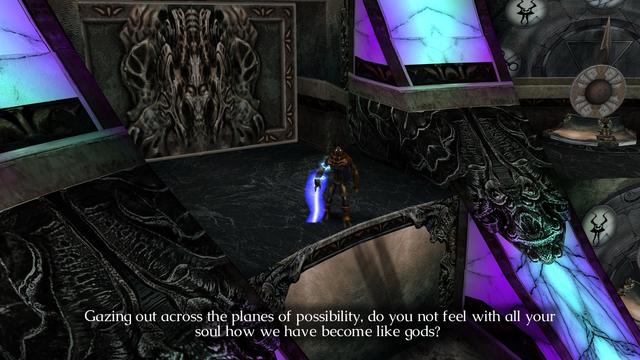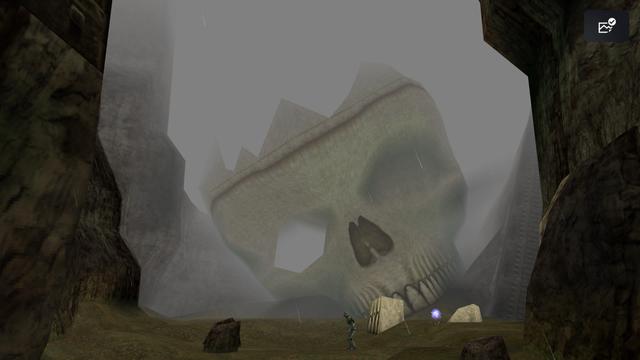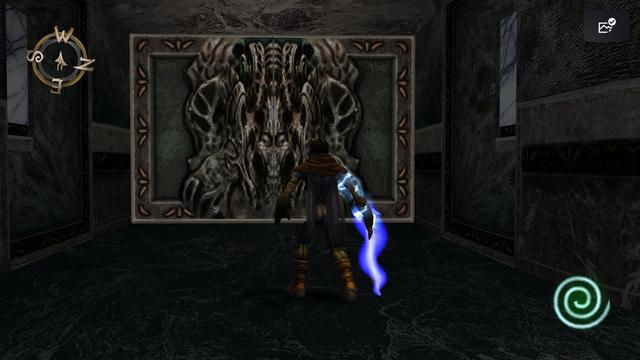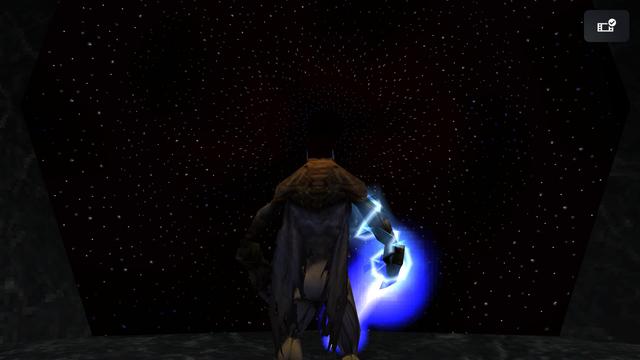Legacy of Kain – 1 & 2 Remastered PS5 Reviewed
Arriving on the original PlayStation just before it was supplanted by its beefier successor, and just as I had dived deep into PC gaming and turned my eye to the Dreamcast, Legacy of Kain: Soul Reaver escaped my notice.
It wasn’t until much, much later that I picked it up, preowned, for the Dreamcast and failed to play it there, too. It was a mix of my own impatience and the game being removed from the context that 1999 would have afforded it.
3D games of the era weren’t the near-Movie narrative experiences we expect today. Any kind of guidance at all was unusual and it was often your own curiosity that would draw you through their enigmatic worlds and force you to overcome their sheer, brutal disinterest in aiding that exploration.
Some scenes are really quite something!
Soul Reaver was one such game, and the remaster shows no interest in fixing that. But you know what? It works. You play Raziel, a disgraced vampire lieutenant of the near god-like Kain- cast outside of existence you are resurrected and reformed, displaced centuries out of time and forced to navigate two parallel worlds- that of the living, and that of the dead. You, the player, live the confusion of Raziel as you negotiate his world; twisted beyond recognition.
What emerges from this brutal, unhelpful game design is something that feels like a proto Elden Ring. Though LoK is much more direct and forthcoming with its exposition it still tickles the same fancy. A handful of difficult enemies with deep (for the time, at least) combat, huge set piece bosses – though not even nearly as challenging or complex – and rich world-building enveloped in a similar mystique. Where LoK differs, however, is block puzzles. Crystal Dynamics clearly loved block puzzles because these feel lifted right out of Tomb Raider; push a block to reach somewhere higher, heft blocks around – Razel’s undeath bestows him with new strength – flip switches, solve rudimentary timed puzzles, that sort of business. You can roll and stack blocks, though, so you’ll find yourself thinking in three dimensions rather than playing a glorified slide puzzle. It’s a well thought out system, even if they do get a little tiresome toward the end.
This game cranks out some incredible scenes, even for a late stage PS1 title!
What’s also notable about Legacy of Kain: Soul Reaver – at least for its time – is its streaming levels, loading – ostensibly – seamlessly while you negotiate your way around its labyrinthine passages. It doesn’t present a truly open-world, since it’s generally very claustrophobic, relying on view-blocking to load upcoming areas and – where that falls short – simply throwing a tiny door in your face. I hope you like tiny doors because you’ll be opening a lot of very similar tiny doors in a lot of very different areas and they will break the flow of the game and shatter the illusion of grandiosity in some regions. It’s a little disappointing that a remaster couldn’t have dropped these, since I’d wager the PlayStation 5 would have little to no trouble loading the entire world of Legacy of Kain effectively instantly. I get it, though. The hardware constraints of the time informed the level design which, in turn, informed the oppressive mood of Soul Reaver. It feels wrong to change this retrospectively- one of my most formative memories in videogames was the pulse-pounding moment of both respite and horror I got just opening doors in Resident Evil 2.
Legacy of Kain 1 & 2 Remastered has a very “Unreal 99 texture pack” feel about the remaster. I prefer the old look in a lot of cases!
And to be fair- these are remasters, not remakes, and represent mostly just a visual overhaul of the originals. In Soul Reaver you can click the right stick to switch between the old/new graphics at pretty much any time. You’ll notice that, for the most part, you’re just getting HD textures over the old geometry. This has a very Unreal Tournament 1999 HD Texture Pack vibe to it, and the juxtaposition between high resolution textures and low fidelity geometry is very, very jarring. As such I find myself, more often than not, playing with the original graphics. In either case the foggy, pixellated, muddy visuals of the PlayStation 1 have been left in the past, and you get glorious, widescreen, high-definition, long-draw distance modern fidelity. In a game like Soul Reaver this has a tendency of stripping away some of the atmosphere and charm from the original… though since I never got far in the original it largely escaped my notice.
I have, however, made progress in Soul Reaver – rolled end credits, in fact – and have genuinely enjoyed discovering a game that could, and should, have been a firm, nostalgic favourite- had I, y’know- not become a PC gamer. If you’ve any familiarity with the Tomb Raider series there’s a lot of shared vibes, though Soul Reaver seldom reaches the verticality of Tomb Raider, and never quite captures the same level of awe. You’ll probably have a good time with Soul Reaver either way. It’s a testament to just how good this franchise was that I was drawn in without the pull of nostalgia. Be wary that it takes a little bit of time to really get going, though, and stick with it.
The same, broadly, applies to Legacy of Kain 2, though I’m writing this review having only just started the sequel. It carries on from the former with an unskippable exposition dump – a close copy of the previous game’s ending – and it would be nice if the remaster made that… y’know… skippable. The game plays out more or less the same as the first, except your standard PS1 to PS2 scope and scale changes and a slightly more developed combat system with less reliance upon scenery – at least at the start – and as much, if not more, glorious ultraviolence.
Where the remasters really fall flat is the PlayStation 5’s awful habit of using the touch pad as an additional button. This is annoying enough on the PlayStation where the awkward placement and lack of tactile feedback make it difficult to access, but if you’re using remote play (or whatever the heck Sony call theirs) then you’ll find it almost game-breaking. I played via a Steam Deck using Chiaki-NG and could use the Deck’s touchscreen – awkwardly – to simulate this button. Using a PlayStation-branded BackBone One controller – however – means frantically tapping the middle of my phone screen to activate the touchpad button. This is extra frustrating because this button is how you switch between the corporeal and the spirit realms (is it too much to ask for the game to let me press X or Square when I’m stood right on a portal!?) and you’ll be using it a lot. This bugged me most in SR2 when I started playing with my phone and BackBone (SteamDeck-induced wrist and thumb injury). Eventually I swapped “auto face” (sometimes painful, but I’ll survive) from L1 to the touchpad, freeing up L1 for this vital plane shifting function.
Besides this controls present the usual jank of the era- you’ll find yourself wrestling, especially in the first game, with twitchy direction controls, frustrating camera placement and a distinct lack of fluidity in the combat. This would be less annoying if one hit didn’t turn Razael from a legendary blade wielding assassin into an impotent featherweight boxer. I made heavy use of the restore life cheat code (yep, cheats work!) to work around this infuriating quirk (fixed in the sequel, to be fair). Similarly you can’t skip cutscenes, and while you can save anywhere in the first game you’ll be rudely reminded of the limitations of the era when you load said save and find yourself back in the starting underworld zone- forced to make your way back to wherever you were before.
It doesn’t look much when it’s still, but this pulsating dots effect was mesmerising. Totally ruined in the sequel 🤣
In short Legacy of Kain – 1 & 2 Remastered balances the awe and mystery of what were – in their time – incredible games, with the frustration and jank of what was – in its time – a relatively normal gaming experience. If you can suffer the latter then you’ll enjoy the former, whether you’re new to the franchise or not.




